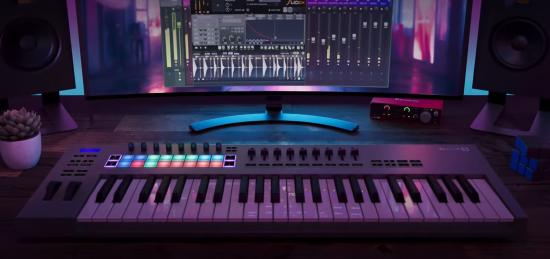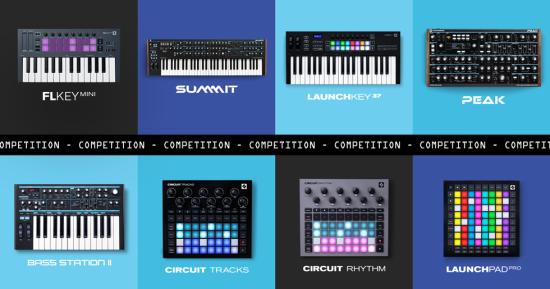Novation product specialist Chris Calcutt gives an interview on Novation's upcoming analog synth Circuit Mono Station.
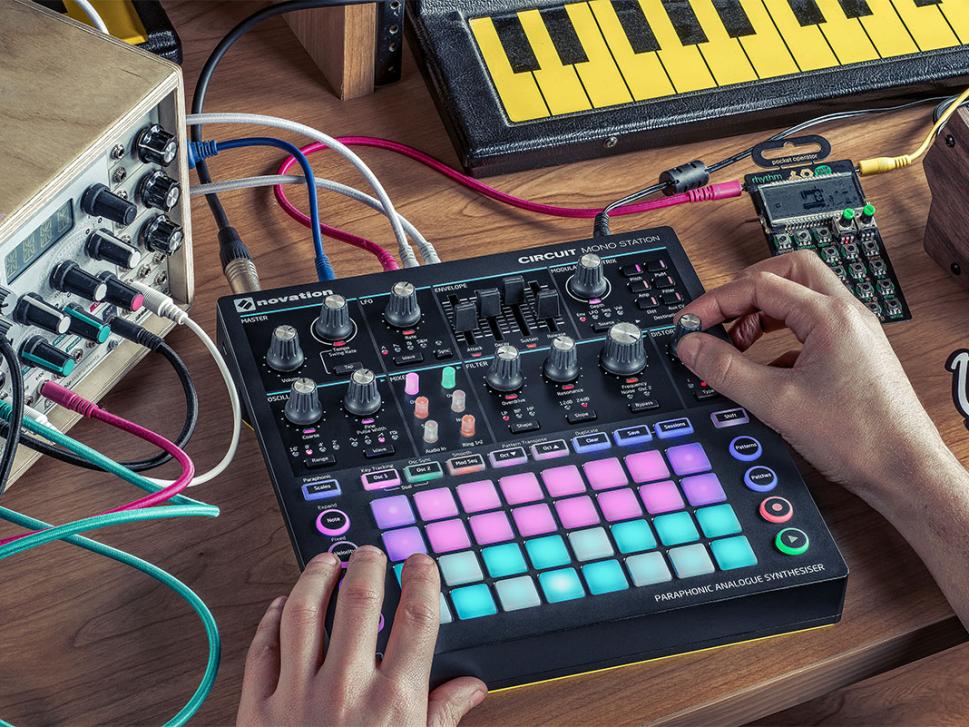
Beat / What was your design aim for the Circuit Mono Station?
Chris / Novation’s Circuit groovebox has proved to be a real hit amongst its users over the past year and a half. As a stand-alone, self-contained electronic instrument it really is a lot of fun to use and I think this is largely due to it's ease of use. The original Circuit uses two six voice digital polysynths, in fact they are pretty much the same engine as our MiniNova synth, but for Circuit Mono Station we wanted to expand the Circuit family and explore what an analogue Mono Synth with the same powerful but easy sequencer could do too.
At first glance the Circuit Mono Station’s synth engine looks quite basic, for the sound we are using core elements of the Bass Station 2 synth, parts such as the oscillators, filters and distortions but the synth’s traditional modulation is kept to a single LFO and envelope. To make it more powerful, we added our first hardware version of the Mod Matrix which opens things up considerably. When you start to use this modulation matrix, it becomes clear that it is actually a powerful synth. But when you add the sequencer and realise that there is full automation of every parameter with a pot…. It turns into an absolute analogue beast (laughs).
With two powerful distortion points and the lovely filter from the Bass Station 2, Circuit Mono Station can be wild and aggressive but also dialled back to a sweet and warm old style analogue. I would say that the Circuit Mono Station is Novation’s strangest and most unique sounding instrument and to be honest, I love the fact that its always a new adventure when you switch it on.
During the design process we also wanted Circuit Mono Station to integrate with control external gear too and so for the first time in many many years for Novation we have CV, and Gate control alongside a dedicated CV aux control and a fully programmable Modulation sequencer, Circuit Mono Station is definitely the best friend for any modular synth too.
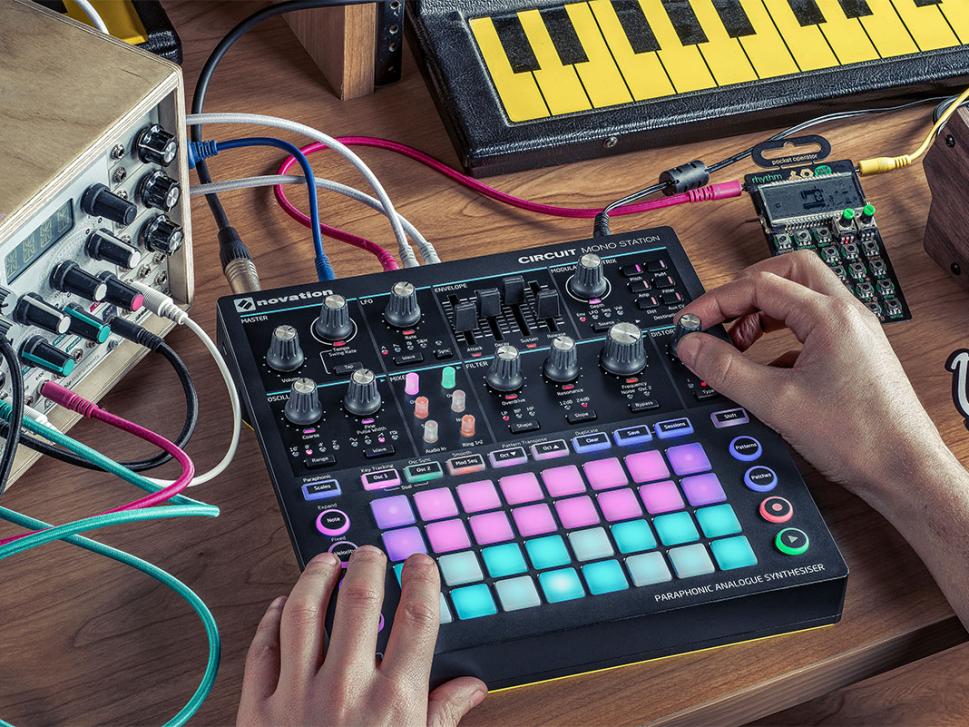
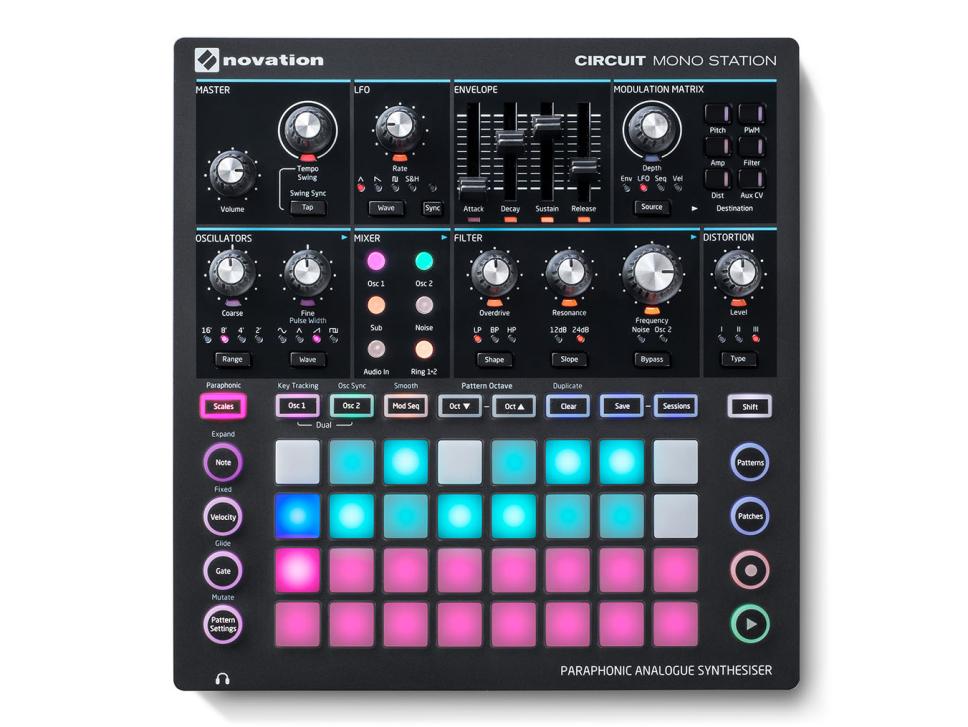
Beat / Which are the most exciting features of the Circuit Mono Station to your mind?
Chris / Well there are so many! Personally, I absolutely love the audio input feature on Circuit Mono Station. You can send any audio you like through the filter and the distortions. This in itself is a wonderful sounding audio effect especially for smashing your drum sounds. But it really starts to come alive when you modulate and automate the filter with a running sequence. At that point Circuit Mono Station becomes an audio processor unlike any other. It’s really easy to get huge and very interesting sounding sequences and sending the original Circuit through the Mono Station’s effects has quickly become one of my very favourite things to do! There’s something very special in creating a drum sequence in Circuit then running it through the analogue goodness of Circuit Mono Station.
Another really cool aspect of the Circuit Mono Station is the fact it can also behave paraphonically. Even though, as it’s name suggests the Circuit Mono Station is technically a mono synth with a single filter and a single amplifier, there are two separate oscillators. These oscillators can also be sequenced separately, meaning you can apply different pitch values to the oscillators at the same time. Even though it’s not true polyphony and both oscillators are running through the same single filter and amplifier the separate “paraphonic” oscillators can create some really unusual and powerful timbres. You can also create some quite advanced harmonic sequences separating the oscillators too. In fact it is actually a very powerful synth feature. For example paraphonic behaviour with the ring modulation is very interesting. Ordinarily a ring modulation sound will be between two oscillators with a fixed and constant distance or interval between them. With the paraphonic behaviour, the oscillators can be set to always change their interval and relationship which gives the ring modulation a very unique sound. Not only does the ring mod pitch change with a programmed sequence but also the timbre can go wild... its really cool. There’s also a lot of nice additional synth features too such as Oscillator sync, per step glide, separating both noise and Osc 2 outputs from the filter and of course it wouldn’t be a real synth if it didn’t have pulse width modulation!
Beat / Please tell us more about the flexible sequencer of the Circuit Mono Station.
Chris / The original Circuit’s sequencer is so easy and fun to use and we have kept quite a bit of the original workflow. Basically if you know Circuit, you already know Circuit Mono Station. That said we did want to expand on what is possible with this powerful style of grid based sequencing, so we’ve added some extra features too. We now have a “patterns settings” page which allows you to decide the start and end points of your seqeunce, playback direction, and speed of your pattern… including the holy grail for Circuit users… triplets!
We also have a great “Mutate” feature which will randomise your selection of notes. This is so much fun for extending and pushing your sequences to the next level and it feels really musical too. Mutate works separately for both Osc 1 and Osc 2 sequencers, which means there is a lot of scope for developing and finding new musical ideas. The per step glide for each oscillator is also a very nice feature: To get different slide values for individual steps can make some very funky sounding sequences quickly too and different glide values on the different oscillators can once again open up some fun crazyness on the ring modulation output. Another new feature that has made it in to the sequencer is what we are calling fractional gate lengths. This means the sequencer can now record notes shorter than a standard 16th length. It might not sound like much on paper but in reality it makes the Circuit engine sound so much more musical and natural to play and again it gets the funk flowing!
One of the real highlights of the original Circuit was the fact that we have been able to upgrade its features throughout its lifespan. Circuit is a completely different product than where it started all that time ago and we have learnt a lot by realising the power and potential of this style of product upgrading. For Circuit Mono Station we have built in even more space and processing power than we had for the original Circuit. This means that we have factored in even more space and potential for upgrades to Circuit Mono Station for the future which makes it a very exciting prospect. Of course this doesn’t mean that we have finished with the original Circuit upgrades either so keep watching this space.



